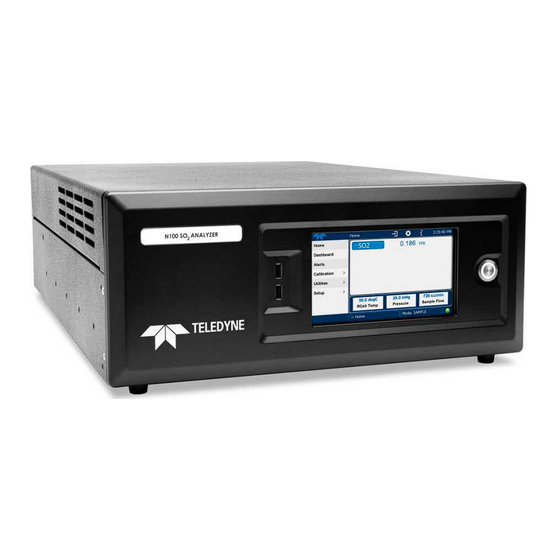
TELEDYNE API N100 Manuals
Manuals and User Guides for TELEDYNE API N100. We have 1 TELEDYNE API N100 manual available for free PDF download: User Manual
TELEDYNE API N100 User Manual (167 pages)
UV Fluorescence SO2 Analyzer
Brand: TELEDYNE API
|
Category: Measuring Instruments
|
Size: 20 MB
Table of Contents
-
Warranty8
-
Unpacking21
-
Front Panel23
-
Rear Panel24
-
Sensor46
-
Startup48
-
Calibration50
-
Home Page52
-
Dashboard54
-
Alerts56
-
Calibration57
-
Utilities58
-
Setup58
-
Setup>Events62
-
Setup>Vars66
-
Com74
-
TCP Port274
-
Modbus77
-
Hessen77
-
Ethernet79
-
Calibration80
-
Zero Air81
-
Interferents83
-
Mode Name90
-
Flow Problems114
-
High Flow116
-
No Response117
-
Excessive Noise120
-
Slow Response120
-
AC Main Power121
-
Sulfur Dioxide144
-
UV Source Lamp148
-
The PMT149
-
Optical Filters149
-
Optical Lenses152
-
Dilution153
-
Light Pollution154
-
Sample Gas Flow155
-
Modules159
-
Power Switches159
-
Adaptive Filter159
-
Glossary161
Advertisement
